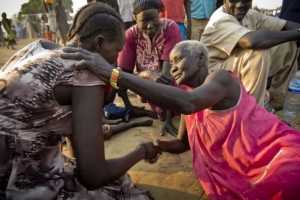

A Crisis of Aging Without Support
Comoros is a lower-middle-income archipelago of about 866,000 people. Poverty remains widespread; approximately 38% of the population lived below the $3.65 per day poverty line in 2024. This hardship is concentrated in rural areas, where elderly individuals often lack stable income, pensions or access to basic services.
There is no universal pension system. Many older adults continue subsistence farming into advanced age, often when health limits their work. With adult children migrating to Mayotte, France or mainland Africa, elders can be left isolated, reliant on intermittent remittances or community goodwill.
Remittances from Comorians abroad are a financial lifeline, contributing roughly 25% of gross domestic product (GDP). They offer crucial short-term support but cannot substitute systemic protection. Their distribution is uneven, especially among disadvantaged older women and those on remote islands.
Many older people in Comoros suffer from chronic illnesses such as hypertension, arthritis, diabetes and visual impairment, conditions that worsen without consistent access to health care. Mental health concerns, including depression and cognitive decline, are common among older adults, especially those living in isolation or without financial security.
Poverty impacts older women more severely than men in Comoros. Due to lower lifetime earnings, informal labor participation and gender inequality in property ownership, women are less likely to have savings or access to land or inheritance. Older women are also more likely to be widowed and live alone, making them more vulnerable to poverty and neglect.
Building Hope Through Social Protection
In 2023, the World Bank approved a $30 million grant to strengthen the country’s social safety net. The funds support cash transfers for the chronically poor, climate-sensitive public works and income-generating programs reaching more than 40,000 households. While not specifically for older adults, the program lays essential groundwork for broader inclusion.
A Vision of Inclusion
Comoros is at a pivotal moment: economic growth is projected to reach 4% by 2027, partly fueled by remittances, tourism and public investments connected to the Comoros Emergent 2030 plan. Yet without urgent, elder-focused policies, the nation risks leaving its seniors behind.
By weaving elders into economic plans through pensions, health care, community conservation and blue economy jobs, Comoros can recognize and repay the generation that nurtured it through adversity. Support from the diaspora, international donors and NGOs could align with government efforts to create a society where leaders can age with dignity.
With determined leadership and sustained investment, Comoros could transform elderly poverty from a silent crisis into a story of resilience and shared prosperity.
– Reign Lankford
Reign is based in Houston, TTX, USA and focuses on Global Health for The Borgen Project.
Photo: Flickr









